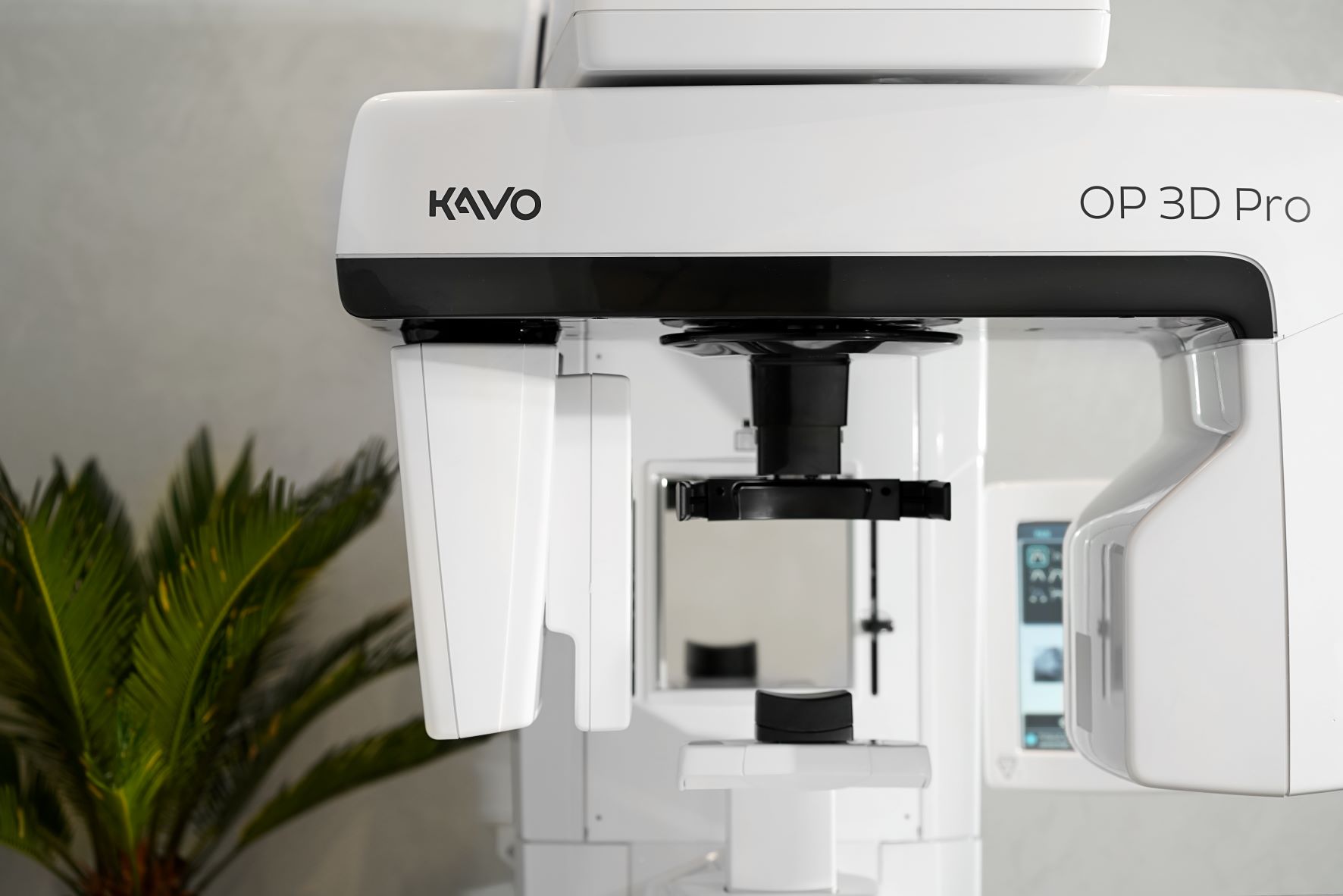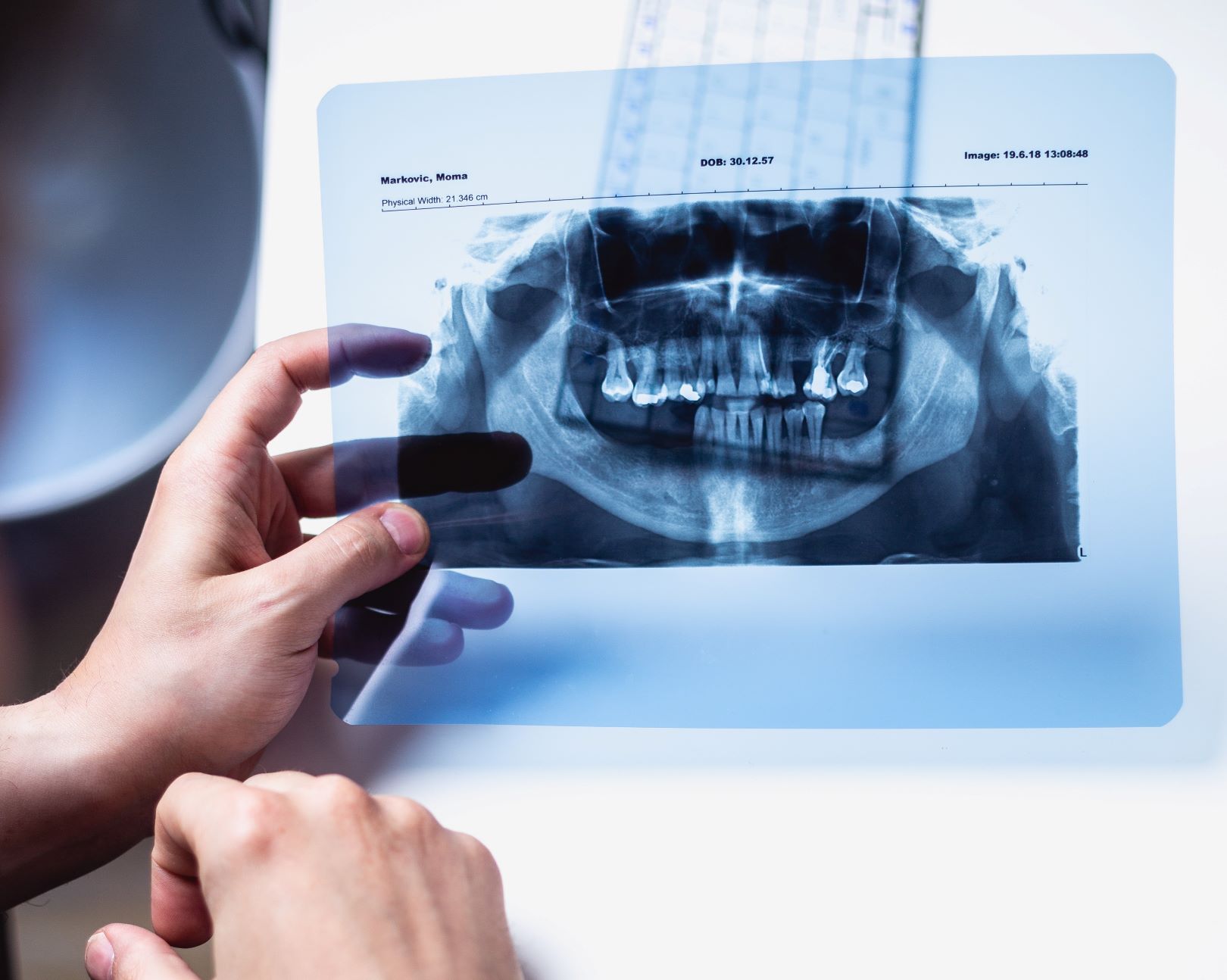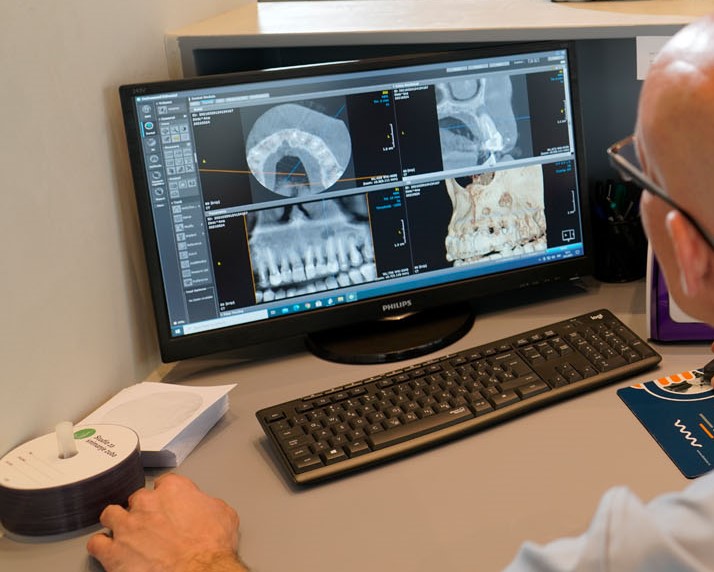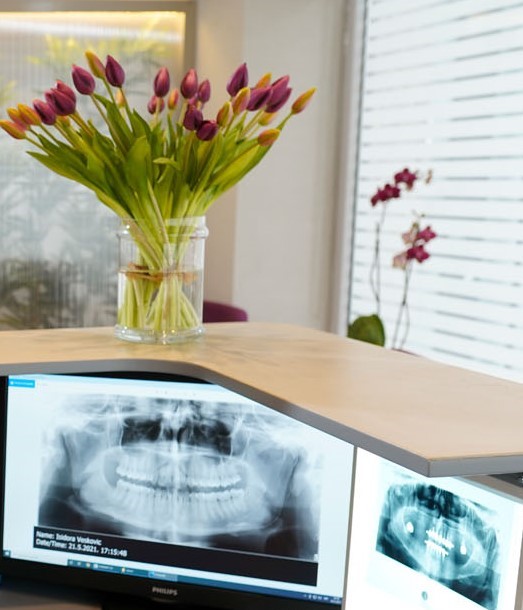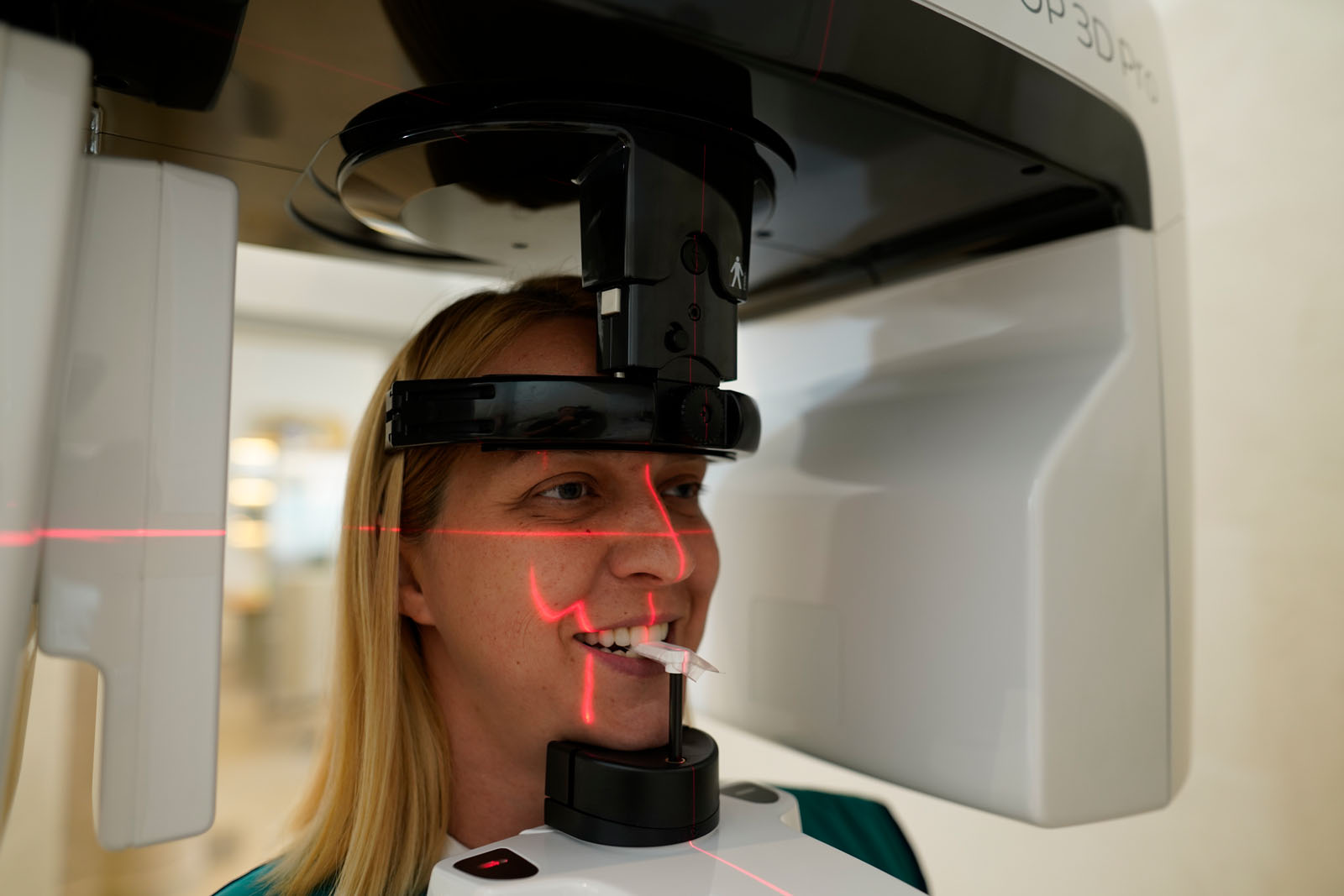3D radiogram - CBCT (cone beam computered tomography)
3D radiogram - CBCT (cone beam computed tomography) represents dental cone beam computed tomography which, in addition to producing X-rays, also applies a math-based image processing method. This digital geometrical processing is used for generating three-dimensional images of the inside of an object, consisting of a large series of two-dimensional images produced during one rotation of the gantry around its axis.
Such X-ray view enables dentists to define a diagnosis and therapy plan more easily and precisely, with an ultimate goal of successful treatment. It provides more planes (axial, panoramic, sagittal), as well as an insight into details which are not visible in standard two-dimensional images.
Four different field sizes (5 x 5, 6 x 8, 8 x 8, 8 x 15) enable imaging of regions of interest with minimal radiation dosages.


